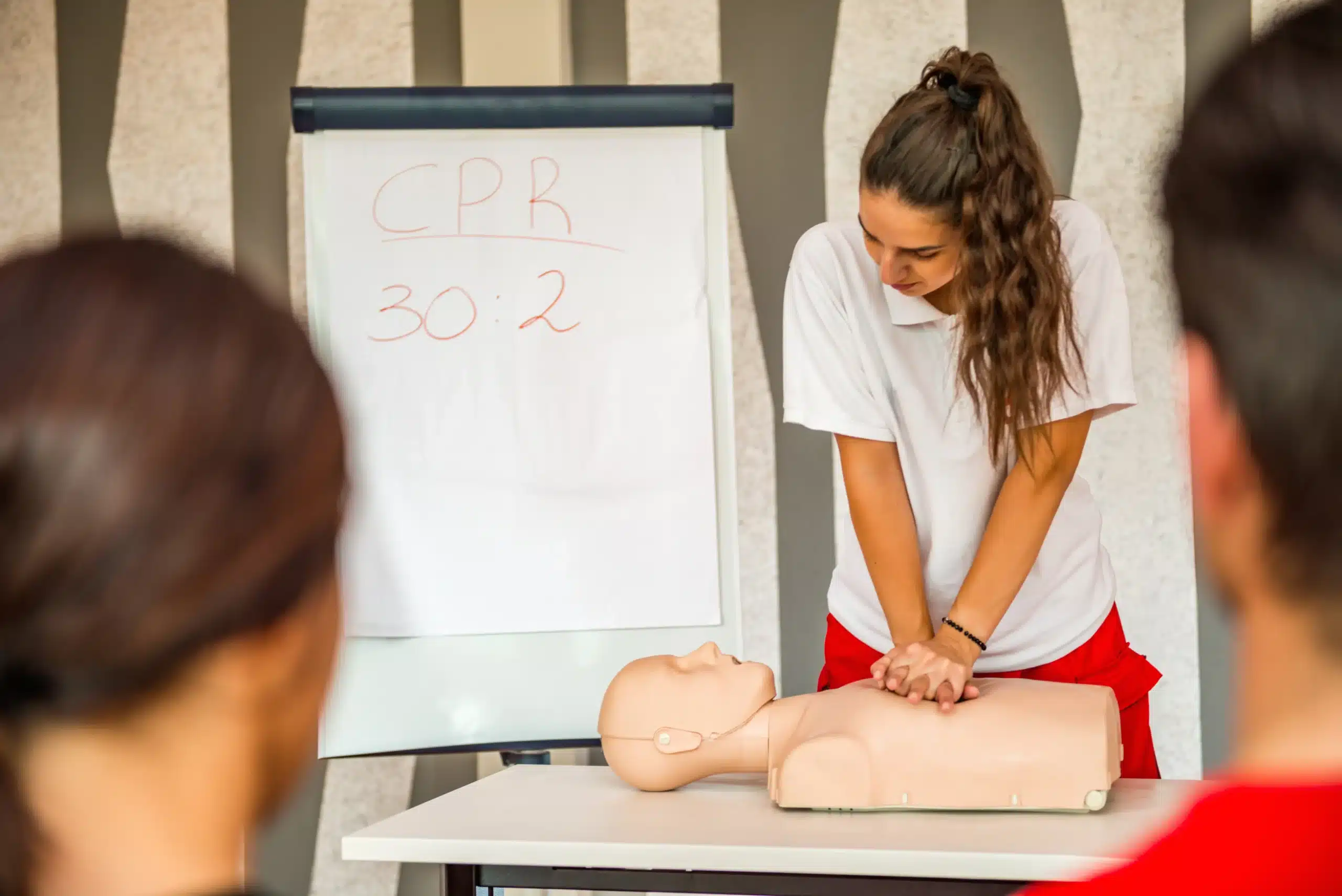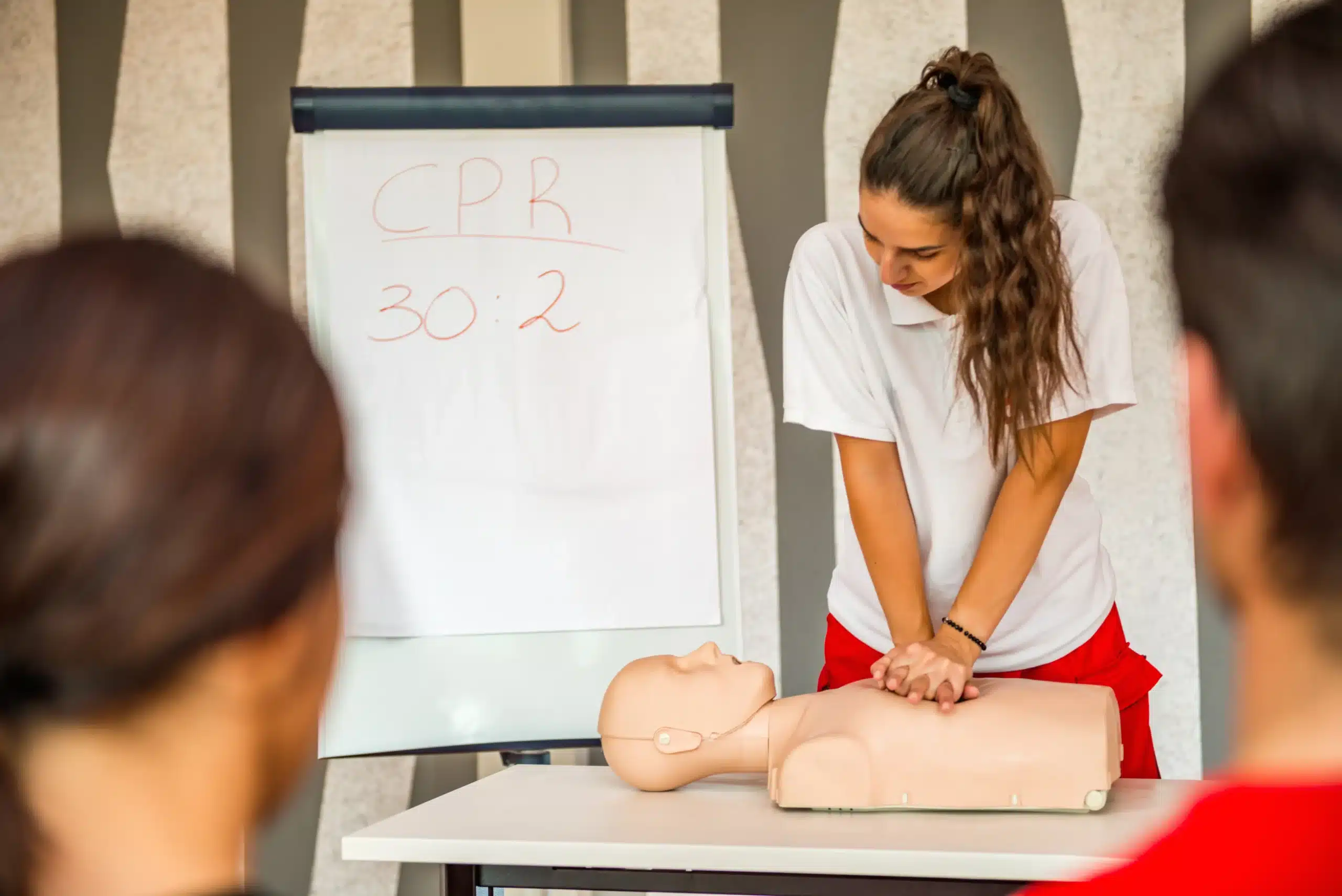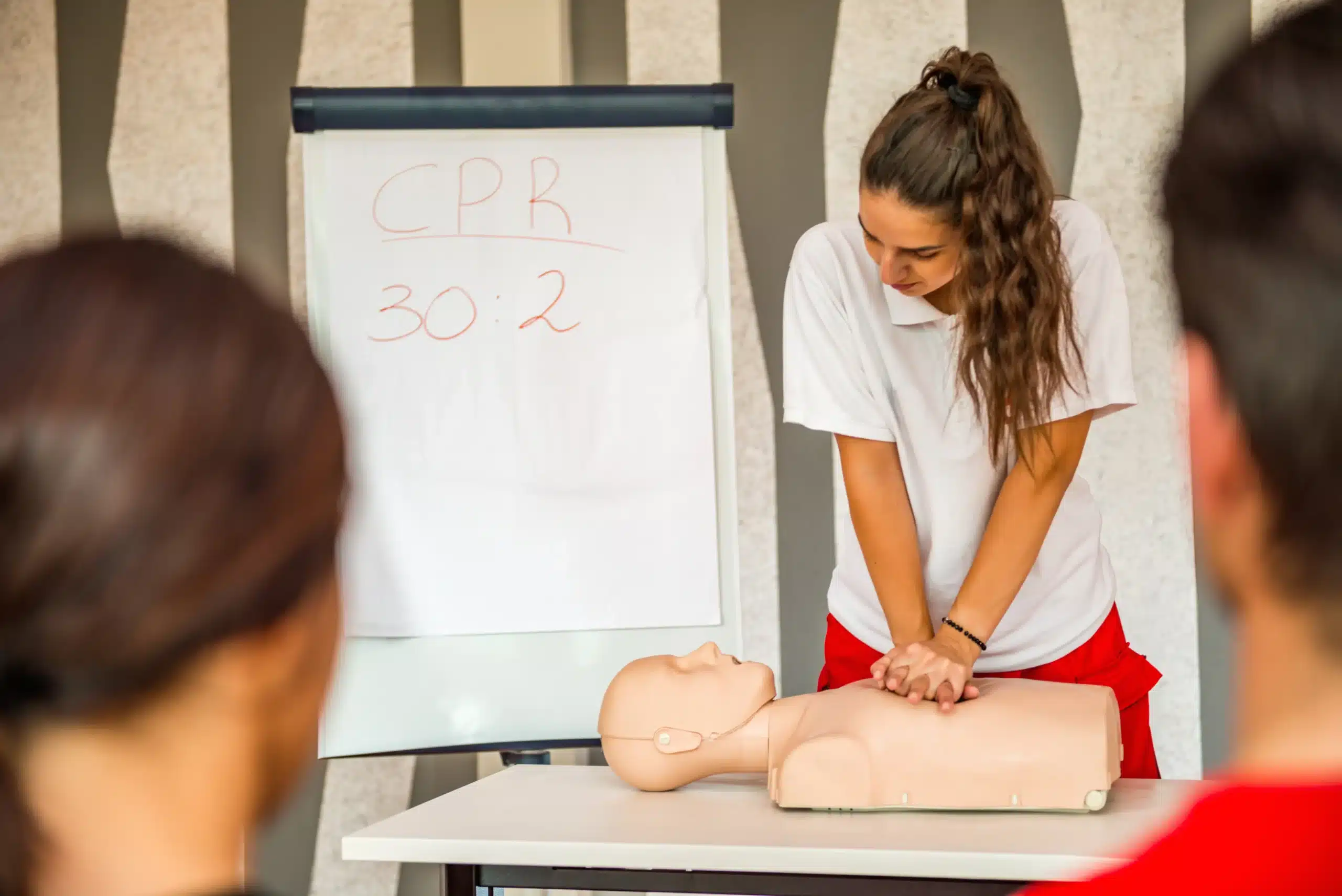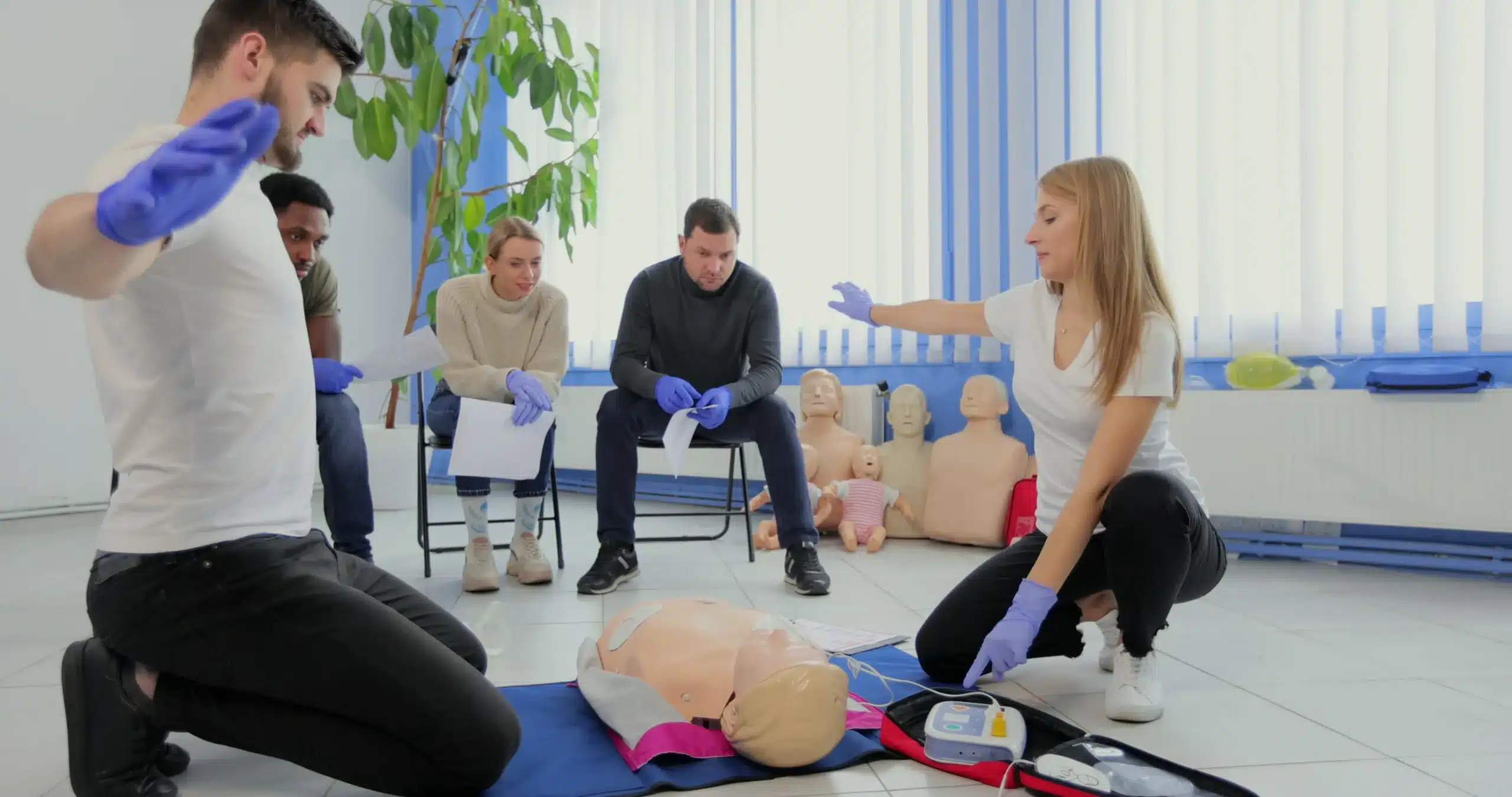Empowering others with life-saving skills is a rewarding experience, and becoming an ACLS instructor puts you in that position. This guide provides a comprehensive overview of the ACLS instructor class, from prerequisites and course structure to costs and career opportunities. We’ll explore the essential skills you’ll learn, the teaching methods used, and how to choose the right training provider. Plus, we’ll discuss the benefits and challenges of becoming an ACLS instructor, offering practical solutions for new instructors. Whether you’re a healthcare professional seeking career growth or an individual passionate about sharing life-saving knowledge, this guide will help you determine if becoming an ACLS instructor is the right path for you.
Key Takeaways
- Becoming an ACLS instructor is a rewarding journey: From prerequisites like a current AHA ACLS Provider card to the hands-on training involved, each step prepares you to confidently teach life-saving skills.
- Investing in your instructor skills pays off: While there are costs associated with training and materials, the potential for career growth, increased earning potential, and the satisfaction of empowering others makes it a valuable investment.
- Finding the right training center is crucial: Seek out an AHA-accredited training center with a solid reputation, experienced instructors, and comprehensive resources to support your success.
What is an ACLS Instructor Class?
An ACLS Instructor class prepares you to teach Advanced Cardiovascular Life Support (ACLS) courses. It equips you with the skills and knowledge to guide others in providing life-saving care during cardiovascular emergencies. This involves understanding the latest treatment algorithms, mastering effective teaching techniques, and confidently evaluating student performance. Becoming an ACLS Instructor empowers you to share this critical knowledge and contribute to a more prepared and responsive healthcare community. Concord CPR Classes offers high-quality, affordable ACLS training to help you achieve your instructor goals.
Course Objectives and Structure
The primary objective of an ACLS Instructor class is to develop you into a proficient and confident instructor. The course covers the American Heart Association’s (AHA) teaching methodologies, ensuring you can effectively use their materials and adhere to their established guidelines. You’ll learn how to present complex medical information clearly, facilitate engaging discussions, and provide constructive feedback. The course typically follows a structured format, encompassing key areas like course preparation, teaching strategies, testing procedures, and ongoing skill maintenance. This comprehensive approach ensures you’re well-prepared to lead ACLS Provider courses and meet the AHA’s standards.
Skills You’ll Learn
Throughout the ACLS Instructor class, you’ll develop a range of essential skills. You’ll learn how to effectively prepare for your courses, including organizing materials and setting up the learning environment. The course emphasizes practical teaching techniques, such as demonstrating procedures, leading simulations, and managing group dynamics. You’ll also gain proficiency in evaluating student performance, providing targeted remediation, and ensuring students meet the required learning objectives. These skills are crucial for fostering a positive learning experience and producing competent ACLS providers. At Concord CPR Classes, we emphasize hands-on training and personalized instruction to help you master these essential instructor skills.
Teaching Methods
ACLS Instructor classes employ various teaching methods to cater to different learning styles. Expect a blend of interactive lectures, group discussions, hands-on demonstrations, and simulated scenarios. You’ll also work closely with experienced instructors who provide guidance and feedback throughout the course. The curriculum often includes practice teaching sessions where you can apply your newfound skills in a supportive environment. This combination of theoretical knowledge and practical application ensures you’re fully prepared to deliver engaging and effective ACLS training. For medical professionals seeking a streamlined certification process, our RQI program offers a convenient path to becoming an ACLS Instructor.
Prerequisites and Preparation
Becoming an ACLS Instructor involves a few key steps. Understanding the prerequisites and adequately preparing yourself will make the process smoother and increase your chances of success. Let’s break down what you need to know before you begin.
Required Certifications
First, you’ll need a current American Heart Association (AHA) Provider Card in Advanced Cardiovascular Life Support (ACLS). This demonstrates your foundational knowledge and skills. You also must be affiliated with an AHA Training Center that is accepting new instructors. This affiliation provides the necessary oversight and support for your instructor journey. Check with your local Training Center to confirm their instructor candidate acceptance process. Concord CPR Classes is an AHA Training Center serving Concord, Walnut Creek, and Pleasant Hill.
Experience and Background
While specific experience requirements can vary, demonstrating a solid grasp of life-saving techniques is essential. Think about how you’ll convey these skills to future students. Prior healthcare experience can be beneficial, especially for advanced courses like ACLS and PALS, but it isn’t always mandatory. For example, if you’re aiming to become a Heartsaver instructor, healthcare experience isn’t typically required.
Pre-Course Study Materials
Before your instructor course, familiarize yourself with the relevant study materials. The ACLS Instructor Essentials Course provides a comprehensive overview of teaching methodologies, using AHA materials, and adhering to course policies. This pre-course preparation will give you a head start and boost your confidence going into the training. Take the time to review the materials thoroughly—it will significantly enhance your overall learning experience.
Getting Certified
So, you’re ready to become an ACLS Instructor? Great! This section breaks down the steps to get you there. It’s a rewarding path that lets you empower others with life-saving skills.
Application and Enrollment
First, find an American Heart Association (AHA) Training Center near you. You can usually locate one through the AHA website or other online resources. Once you’ve found a few options, compare their offerings and see which one best fits your needs and location. For example, if you’re in the Bay Area, you can find training centers in Concord, Walnut Creek, and Pleasant Hill. Before applying, make sure you have a current AHA Provider Card in the discipline you want to teach and are affiliated with a Training Center that’s accepting new instructors. Then, submit your application.
Training and Assessment
The ACLS Instructor Essentials Course prepares you to teach AHA Instructor-led and blended learning ACLS Provider courses. This course covers core information about instructing ACLS courses, including how to prepare, teach, test, remediate, close a course, and stay current with the latest guidelines. After completing the Instructor Essentials Course, you’ll be monitored teaching your first class. Successful completion earns you a two-year Instructor card—your license to train others in ACLS.
Maintaining Your Certification
Your journey doesn’t end after you get your instructor card. To maintain your certification, teach at least four ACLS classes every two years. You’ll also need to complete renewal courses every two years and stay updated on the latest AHA guidelines. This ensures your skills and knowledge remain sharp, so you can confidently equip your students with the most current life-saving techniques. Staying current is key to being an effective and reliable ACLS Instructor.
Costs and Considerations
So, you’re ready to take the leap and become an ACLS Instructor? That’s fantastic! Naturally, you’ll want to understand the investment involved. Let’s break down the costs associated with becoming an ACLS instructor.
Typical Price Range
The price tag for an ACLS Instructor course isn’t fixed. It typically falls somewhere between $200 and $400 for a Basic Life Support (BLS) Instructor course, a common prerequisite. This usually covers your online learning modules and the essential hands-on training. Keep in mind that becoming an ACLS instructor often requires prior instructor certifications (like BLS), so factor those costs into your budget. For a more detailed breakdown of instructor course costs, check out this guide from EMR Safety and Health.
Factors Affecting Cost
Several factors influence the final cost of your ACLS Instructor training. The most significant factor? The type of instructor certification and the required materials. Think about it: teaching ACLS requires more advanced equipment than a basic CPR class. You’ll need to invest in training materials like manikins, AED trainers, and other supplies. These costs can range from a few hundred dollars to over $2,000.
Additional Expenses
Beyond the course itself, remember to account for additional expenses. For example, ACLS certification (or recertification) often involves a skills session and potentially a Heartcode package, ranging from $125 to $300, depending on whether you need a textbook. Star CPR offers a clear breakdown of these costs. Travel, accommodation, and study materials can also add up. Creating a comprehensive budget beforehand will help you prepare and avoid surprises.
Benefits and Challenges of Becoming an ACLS Instructor
Becoming an ACLS instructor can be a rewarding experience, both personally and professionally. But like any career path, it’s important to weigh the advantages and challenges before committing. This section explores the potential benefits, including career advancement and income opportunities, as well as common challenges and solutions for new instructors.
Career Advancement
Teaching ACLS can open doors to new career opportunities. Whether you’re a seasoned healthcare provider or looking to transition into a teaching role, becoming a certified ACLS instructor can significantly enhance your resume. It demonstrates advanced knowledge and a commitment to life-saving skills. Instructor certification can lead to positions in hospitals, clinics, and other healthcare settings, or allow you the flexibility to work independently or even start your own training business. For those already working in healthcare, becoming an ACLS instructor can also increase your value within your current organization, potentially leading to promotions and increased responsibilities.
Teaching and Certification Abilities
As an ACLS instructor, you’ll gain the skills to not only teach essential life-saving techniques but also to certify others in these critical skills. The ACLS Instructor Essentials Course provides comprehensive training on conducting effective ACLS courses, covering everything from course management and lesson planning to practical skill demonstrations and assessment. You’ll learn how to create engaging and informative training sessions that empower healthcare professionals to respond confidently in emergency situations. This includes instruction on both traditional instructor-led courses and blended learning formats, giving you the flexibility to adapt to different learning styles and environments.
Potential Income
While becoming an ACLS instructor requires an initial investment, the potential for income can be substantial. The overall cost to become an ACLS instructor can range from $1,000 to $3,000, depending on the training center and required materials. However, once certified, you can set your own course fees and control your earning potential. This can be particularly attractive for those seeking supplemental income or building a full-time career in healthcare training. Many instructors find that the financial rewards, combined with the personal satisfaction of sharing their expertise, make it a worthwhile investment.
Common Challenges and Solutions
New instructors often face challenges, such as managing class logistics, maintaining a good pace, and keeping students engaged. Feeling organized and confident during your first class is key. Experienced instructors recommend thorough preparation, including familiarizing yourself with the course materials, practicing your teaching delivery, and anticipating potential student questions. Creating a positive and supportive learning environment can also help students feel comfortable and motivated. Remember, effective teaching involves not only conveying information but also fostering a dynamic and interactive learning experience. Connecting with other ACLS instructors can also provide valuable support and mentorship as you begin your teaching journey.
Choosing the Right Training Provider
Finding the right training provider is key to a positive and effective learning experience. Here’s what to consider when making your decision:
Accreditation and Reputation
Accreditation is crucial when selecting an ACLS Instructor training course. Look for providers accredited by a nationally recognized organization like the American Heart Association (AHA). The AHA’s rigorous standards ensure instructors receive high-quality training and are well-prepared to teach these life-saving skills. A provider’s reputation matters too. Seek out testimonials and online reviews from past students to understand their experience with the course and the instructor.
Instructor Qualifications
Instructors should possess extensive experience and in-depth knowledge of ACLS. Before enrolling, check the instructor’s credentials and certifications. Confirm they hold a current AHA Provider Card and are affiliated with an AHA Training Center. These qualifications demonstrate their expertise and commitment to maintaining up-to-date knowledge and skills. A qualified instructor can make all the difference in your learning.
Course Reviews and Resources
Thoroughly research the course content and available resources. Look for programs like the ACLS Instructor Essentials Online course that offer a comprehensive curriculum covering the instruction cycle, including preparation, teaching, testing, and remediation. Access to online resources, practice materials, and ongoing support can significantly enhance your learning and preparedness. Reading reviews from other instructors can also offer valuable insights into the course’s strengths and weaknesses.
Top ACLS Instructor Training Providers
Here are a few reputable training providers to consider:
American Heart Association
The AHA offers the ACLS Instructor Essentials Course, designed to prepare instructor candidates to teach AHA Instructor-led and blended learning ACLS Provider courses. The course emphasizes using AHA materials and ensuring students meet learning objectives.
American Red Cross
The American Red Cross offers various ACLS courses, including instructor training, recognized for its quality and adherence to national standards.
National Health Care Provider Solutions
National Health Care Provider Solutions provides comprehensive ACLS instructor training to meet the needs of healthcare professionals looking to teach ACLS courses.
ProMed Certifications
ProMed Certifications offers ACLS instructor courses designed to equip healthcare professionals with the skills to teach ACLS effectively.
HealthStream
HealthStream provides ACLS instructor training tailored for healthcare organizations, ensuring instructors are well-prepared to deliver high-quality training.
Concord CPR Classes
Concord CPR Classes offers ACLS instructor training with a focus on practical skills and real-world application, making it a popular choice for healthcare professionals in Concord, CA, and surrounding areas like Walnut Creek and Pleasant Hill.
Related Articles
- ACLS Instructor Certification: A Complete Guide – Concord CPR Classes
- ACLS Certification in Concord: Your Complete Guide – Concord CPR Classes
- Best Online ACLS Classes in Pleasant Hill – Concord CPR Classes
- ACLS Courses in Concord: Your Complete Guide – Concord CPR Classes
- ACLS HeartCode in Concord: Find Classes Near You – Concord CPR Classes
Frequently Asked Questions
What are the prerequisites for becoming an ACLS Instructor? You’ll need a current AHA ACLS Provider card and affiliation with an AHA Training Center that’s accepting new instructors. Having a strong background in healthcare can be helpful, especially for advanced courses like ACLS and PALS. Before your instructor course, familiarize yourself with the ACLS Instructor Essentials materials.
How do I become certified as an ACLS Instructor? Find an AHA Training Center near you, confirm they are accepting instructor candidates, and submit your application. You’ll then complete the ACLS Instructor Essentials Course, which covers course preparation, teaching, testing, and remediation. Afterward, you’ll teach your first class under observation. Successful completion earns you a two-year instructor card.
What does an ACLS Instructor class entail? An ACLS Instructor class prepares you to teach ACLS courses. You’ll learn the AHA’s teaching methodologies, how to present complex medical information clearly, facilitate engaging discussions, and provide constructive feedback. The course uses a mix of lectures, discussions, demonstrations, and simulated scenarios.
What are the ongoing requirements to maintain my ACLS Instructor certification? To keep your certification current, you must teach at least four ACLS classes every two years. You’ll also need to complete renewal courses every two years and stay updated on the latest AHA guidelines.
How much does it cost to become an ACLS Instructor? Costs vary, but a BLS Instructor course (often a prerequisite) typically ranges from $200 to $400. ACLS Instructor training, along with required materials like manikins and AED trainers, can add to this cost. Factor in additional expenses like travel, accommodation, and study materials. Remember to research various training centers and compare their pricing and offerings.








